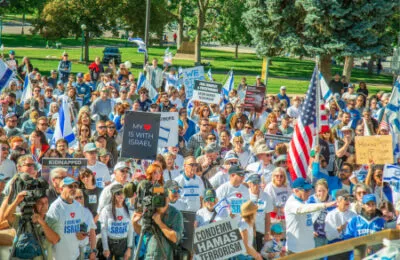There’s a political adage: “Don’t agonize — organize!”
This applies to genealogy, too. We often agonize over our unorganized, growing mountain of “stuff,” whether paper or digital.
As we get deeper into finding our ancestors, we invariably start collecting a variety of information, in the form of documents, notes, clippings, charts, maps, photos, books, articles — the list can be endless. When we start, much of that is paper, and it too often sits in piles, begging to be sorted.
You know it’s inefficient, because you can’t easily find what you’re looking for, yet you tell yourself you’ll get to it someday.
That was two years ago, and you can’t find your desk anymore.
It’s time to create and organize your own personal archive.
Obviously, any organizing scheme should be tailored to how you think, and what works for your personal style. But since we need to start somewhere — and anything can be changed — we’ll get basic.
One of the most common systems is to create a folder for each of your grandparents – a surname for each grandparent (maiden name for women) and put all material in the appropriate folder. Some people like to color code their folders for quicker identification.
You can go to eight folders, if you know all or most of your great-grandparents.
What goes in them is another decision point. You can put all paper items in the folders, or you can have different folder sets: one for documents, and another for photos.
The key to this organization is being able to quickly find items you’re looking for — the more you can narrow down potential locations, the better.
Obviously, any of this can be changed to suit your needs, but don’t wait too long if you’re going to make big changes.
Needless to say, it would be tragic if something would happen to your documents and photos, especially if they were original or one of a kind. That’s one reason to digitize everything ASAP.
That means either buying a scanner (if you don’t already have one) and doing it yourself, or having someone else do it for you. This is one of those projects that tends to be put off for years, and is often regretted. This would also be a great project to get your children or grandchildren involved (and a sneaky way to get them to care about family history, as a bonus.)
And it is vital that you label photos. This is one of the biggest regrets more experienced family historians have of their early days. Never write on the front of a photo, and avoid writing on the back, especially ink.
The best method is to scan it, and either caption it, or put it into the metadata of the file itself, so it will always be with the digital copy.
As you digitize your paper, you’ll need to create a filing system for that also. The most efficient and easiest system is creating nested folders on your hard drive that mirrors your paper folder system. And because it’s easy to create aliases on your computer (files that don’t take any room), you can put women in folders with their maiden and married names.
You’ll want to create file names that are meaningful rather than the default name or number given when the file is created. Many genealogists use a consistent system that allows files to be easily sorted within each folder.
For example, you could put the date of the document or photo (in a consistent format), name, and type of document. So for example, for my grandmother, I might label it “1895 Celia Smolensky birth certificate” (without quotation marks). It doesn’t have to be that order, but putting a date first (if known) sorts files within a folder.
And needless to say, back up your files on at least one external hard drive and up into a cloud-based storage system.
Once you’re done scanning, you need to decide what you’ll do with your paper files.
Copies don’t need to be kept, especially documents like census records or death indexes, which can generally be found online.
You’ll likely want to keep original and unique documents. But if you keep documents and newspaper articles, the best way to preserve them is putting them in clear plastic sleeves (preferably archival) and keeping them out of sunlight. A three-ring binder is a good storage choice.
As you consider where you’re going to store those paper and digital files, you may well ponder what will become of your archives (paper, digital and heirlooms) once you have joined your ancestors.
Copyright © 2021 by the Intermountain Jewish News











